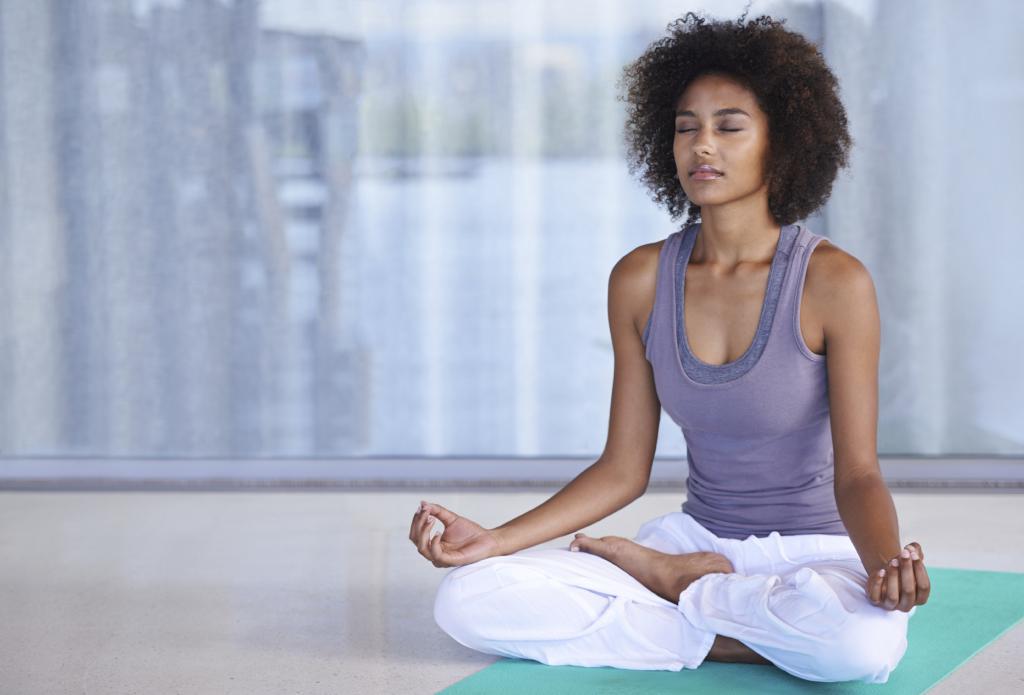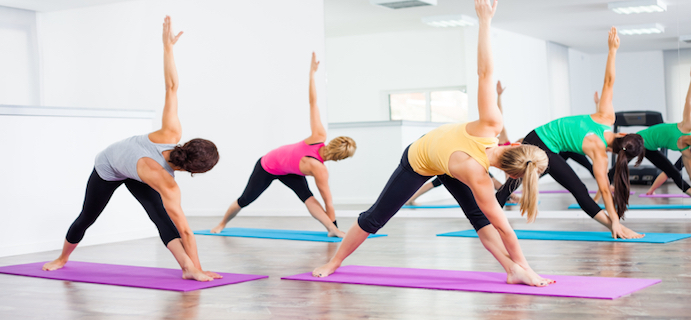When yoga teachers constantly dwell on the positive and talk of inhaling love and light, Genny Wilkinson Priest – a yoga teacher herself – finds it nauseating. Embracing your positive and negative emotions – even in yoga – is better, she says
The next time a yoga teacher asks you to ‘let go of that which no longer serves you,’ please don’t.
All emotions ‘serve’ us in some way, whether it’s anger, jealousy, sadness or contentment, serenity and love. We shouldn’t outright reject an emotion just because it’s negatively charged.
This not uncommon invocation made at the beginning of a yoga class is not only trite but also ambiguous and hence potentially detrimental. All emotions ‘serve’ us in some way, whether it’s anger, jealousy, sadness or contentment, serenity and love. We shouldn’t outright reject an emotion just because it’s negatively charged. These feelings are part and parcel of who we are, and all serve a purpose.

Disney’s latest movie Inside Out illustrates this brilliantly – Sadness, Joy, Fear, Anger and Disgust are manifested in characters that reside inside the brain of the main character, Riley. In equal measures the emotions make up her whole person, her personality. These emotions influence her actions as well as her memories. In the end (spoiler alert) Sadness plays a critical role in Riley’s redemption as the acknowledgement of the emotion alerts others – in this case Riley’s parents – that she needs help.
yoga teachers often dwell only on the positive – they talk of love and light, of gratitude and inhaling the beauty of the universe.
Darkness and light exist by virtue of each other. And yet yoga teachers often dwell only on the positive – they talk of love and light, of gratitude and inhaling the beauty of the universe. At times, it’s nauseating how meaningless smack-happy, new age aphorisms infect the speech of some yoga teachers.
It’s nauseating how meaningless smack-happy, new age aphorisms infect the speech of some yoga teachers.
Rather, let us consider the gamut of our emotions. I’m not saying you should get lost in a pit of negativity but at the very least stop denying whatever suffering you are going through, whether it’s relatively minor like feeling overwhelmed by an avalanche of work or something bigger like caring for a loved one as they cope with a serious illness.
Buddhism teaches us that suffering is an unavoidable fate of human existence. Don’t pretend you’re okay when you’re not. Stop running from scary emotions. I do believe we progress as humans through negative experiences as well as positive ones.
More: A beginners guide of ‘How to Meditate’.
When my father died nearly ten years ago, I feel into a deep pit of sadness. A lot of people wanted to pull me out – especially some yoga teachers. Why? Why not let me feel despondent as I broke down in heaving sobs mid-backend? Was this not something I had to go through? Was this not what every child, be they young or old, experiences in their lifetime – the death of a parent?
Yoga shouldn’t be used as an escape from the pain of life. It should be used as tool to manage, temper and balance the extremities of the mind
Instead, I was pressed to let go and be free of my sadness. Yoga shouldn’t be used as an escape from the pain of life. It should be used as tool to manage, temper and balance the extremities of the mind and pay heed to our personalities as they truly are.
While the physical practice of yoga, the asanas (postures), are very important, they serve as a support structure for the more profound practices of yoga – the spiritual and philosophical ones. When you are feeling challenging emotions arise, take your physical practice (some warm ups, some sun salutations, maybe a shoulder stand and a restorative twist) and then follow these simple steps that will hopefully deliver unto you a more stable mind.
4 STEP PRACTICE FOR DEALING WITH CHALLENGING EMOTIONS
Step One – Sit tall cross-legged in a comfortable position, maybe with the pelvis elevated on a yoga block so that knees are positioned below the hips. Lengthen through the spine and allow the sit-bones to settle into the floor or block. Close the eyes and see nothing, hear nothing, taste nothing. Settle into non-action.
we progress as humans through negative experiences as well as the positive ones
Step Two – The body and the mind are connected through the bridge of the breath so as you shift your awareness to each inhale and each exhale, without changing a thing. Soon you will notice thoughts, emotions and perceptions bubble to the surface. Just be with those thoughts; even the uncomfortable ones. Cozy up to them and accept that they aren’t going anywhere.
Step Three – Now here’s the important bit. Can you see your emotions but not get caught up in them? Can you unify sadness and joy, pleasure and anger so that these feelings don’t bump up against you and cause a reaction inside you?
Step Four – Do you notice a more tranquil state inside you? You have not rejected your emotions but rather you have accepted them as they are. You might even discover that these emotions do not form the core of your being; rather, they are the layers that envelop your essence. Remember, they can’t hurt you, even if you feel them intensely.
In the West, yoga has unfortunately become synonymous with contorting the body into funny shapes following the instructions of shiny, happy yoga teachers. Find an experienced yoga teacher who will guide you to tune in to your inner self, never ignoring what you see but rather accepting what’s there – the good, the bad and the ugly.
Like this article? Sign up to our newsletter to get more articles like this delivered straight to your inbox.
























































